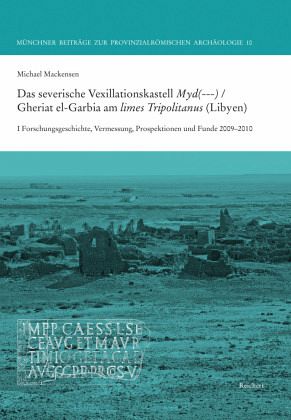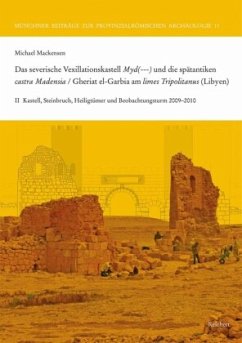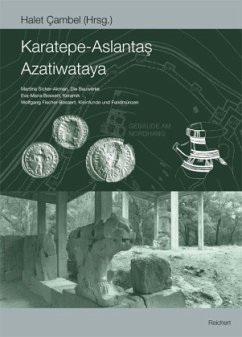
Das severische Vexillationskastell Myd(---) / Gheriat el-Garbia am limes Tripolitanus (Libyen)
I Forschungsgeschichte, Vermessung, Prospektionen und Funde 2009-2010
Versandkostenfrei!
Versandfertig in 2-4 Wochen
59,00 €
inkl. MwSt.

PAYBACK Punkte
0 °P sammeln!
In 2009/10, four seasons were conducted in the Roman fort located 280 km south of Tripoli. The focus of the interdisciplinary project, funded by LMUexcellent, was the fort, built above an oasis for a legionary vexillation around AD 200. The garrison performed control and surveillance tasks and was responsible for the security along the caravan route to the Fezzan. The history of research in the Tripolitanian frontier zone (limes Tripolitanus) from 1819-1996, the geodetic survey of Gheriat el-Garbia and its surroundings based on radar data from the German earth observation satellite (TerraSAR-X...
In 2009/10, four seasons were conducted in the Roman fort located 280 km south of Tripoli. The focus of the interdisciplinary project, funded by LMUexcellent, was the fort, built above an oasis for a legionary vexillation around AD 200. The garrison performed control and surveillance tasks and was responsible for the security along the caravan route to the Fezzan. The history of research in the Tripolitanian frontier zone (limes Tripolitanus) from 1819-1996, the geodetic survey of Gheriat el-Garbia and its surroundings based on radar data from the German earth observation satellite (TerraSAR-X) and the Roman surveying scheme of the fort are presented. The architectural elements provide information about the sophisticated architectural design of the Severan fort. The ceramic survey, the coins and the radiocarbon analyses (14C) provide information on the history of the fort and its occupation not only in the 3rd century, but also on the dating of the reoccupation and restoration ofthe fort in Late Antiquity.
Dieser Artikel kann nur an eine deutsche Lieferadresse ausgeliefert werden.












